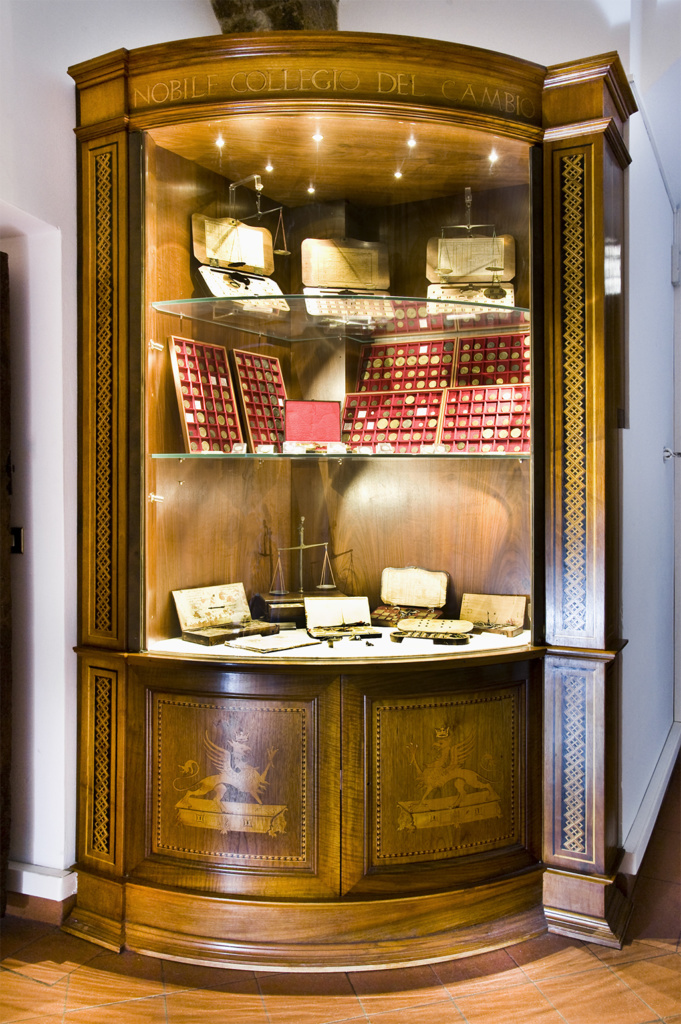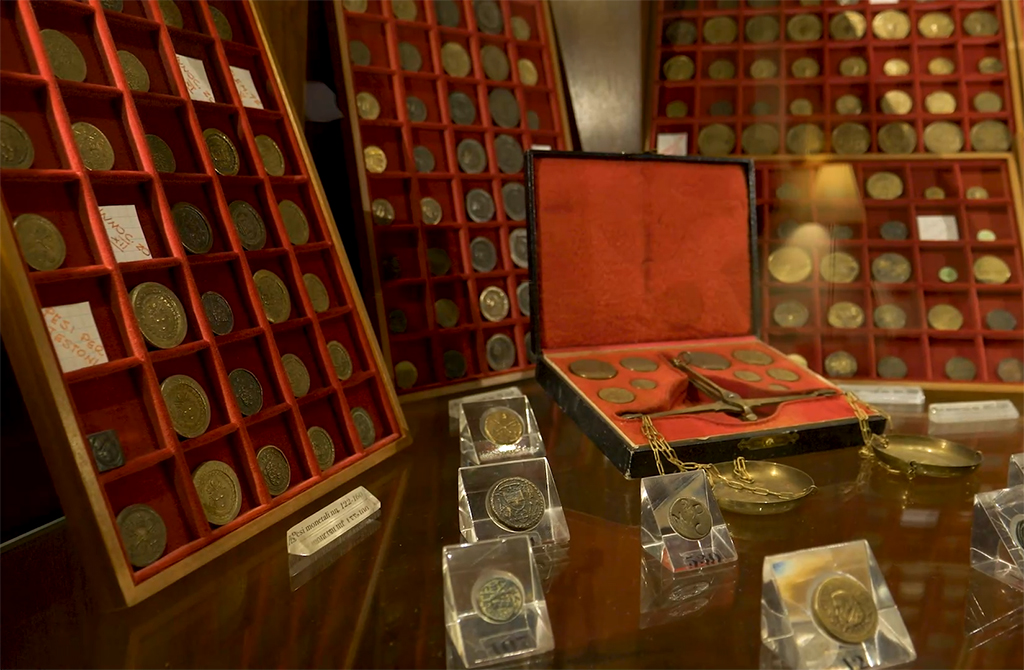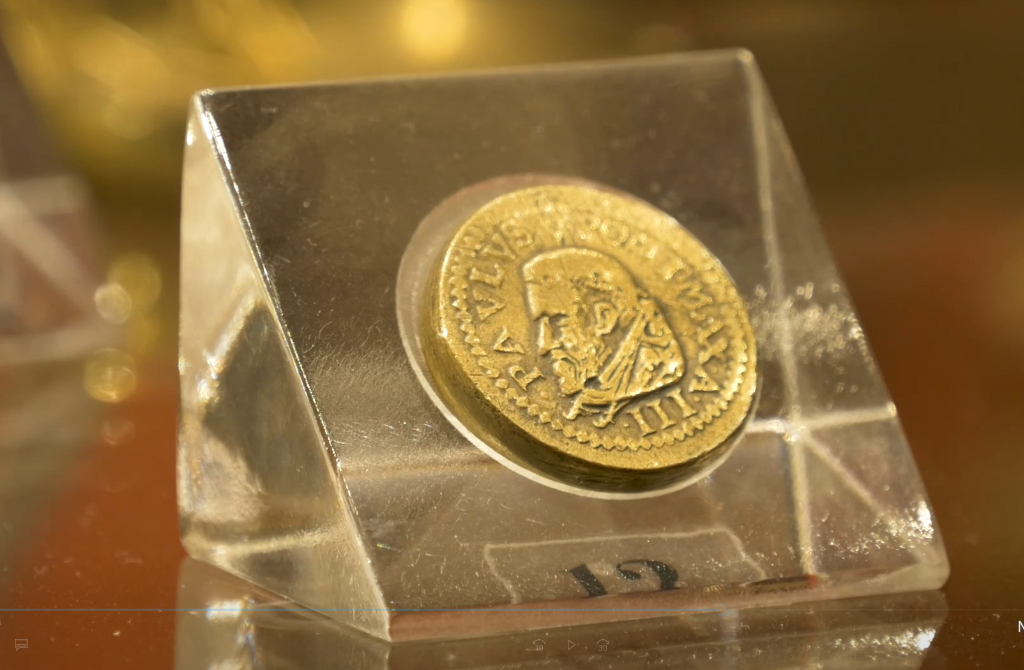The collection of monetary weights fits perfectly into the history of the Money Changers’ Guild, the Art to which bankers and money changers belonged: already in the statutes of the Municipality of Perugia in the 14th century, the Guild was in fact entrusted with the supervision of monetary weights.
From the inception of coinage until the early 20th century, the value of gold and silver coins was determined by their metal content, calculated according to their weight and percentage of precious metal in the alloy.
The alloy was fixed by the issuing authority, so whoever received coins as payment, especially gold, had an interest in checking the accuracy of the weight.
The first monetary weights were produced in the Roman Empire from the 4th cent. AD; the production of monetary weights subsequently continued in the East with the Byzantines and Arabs.
In Western Europe, the production of monetary weights was interrupted at the time of the barbaric invasions and then resumed in the 13th century, following the new minting of gold coins.


Most of these are weights of Roman manufacture, recognisable by the papal coat of arms on the obverse. There are also numerous Bolognese made weights with the city’s coat of arms on the obverse. Other weights come from Northern Italy, France and Germany.
Monetary weights became very popular in all Western European states and remained in use until the first decades of the 20th century.
The Money Changers’ Guild collection contains over 550 monetary weights for coins circulating in Perugia and the Church State, between the 15th and second half of the 19th century, and it is the most complete collection of its kind accessible to the public, also at an international level.
Fourteen boxes containing coin scales and weights complete the collection, representative of European production in the 17th – 20th centuries.


